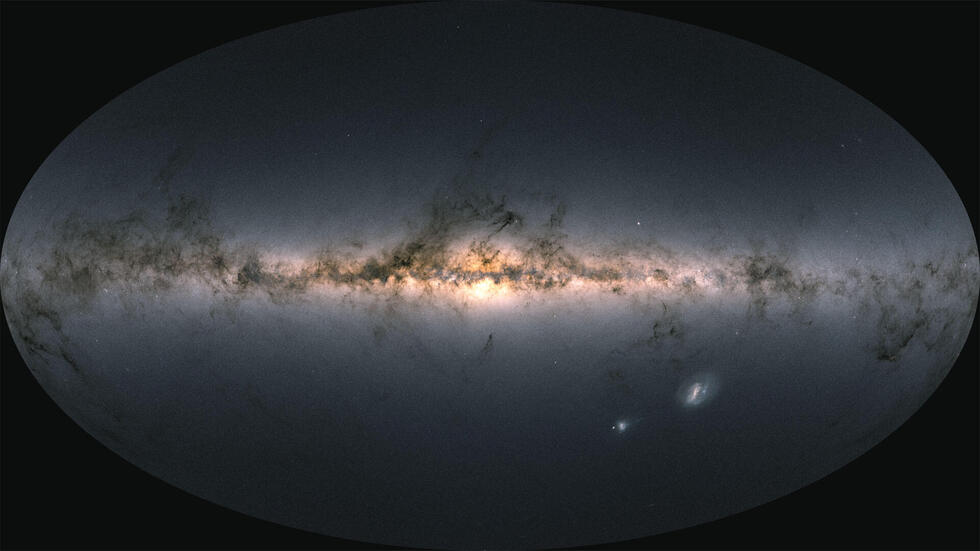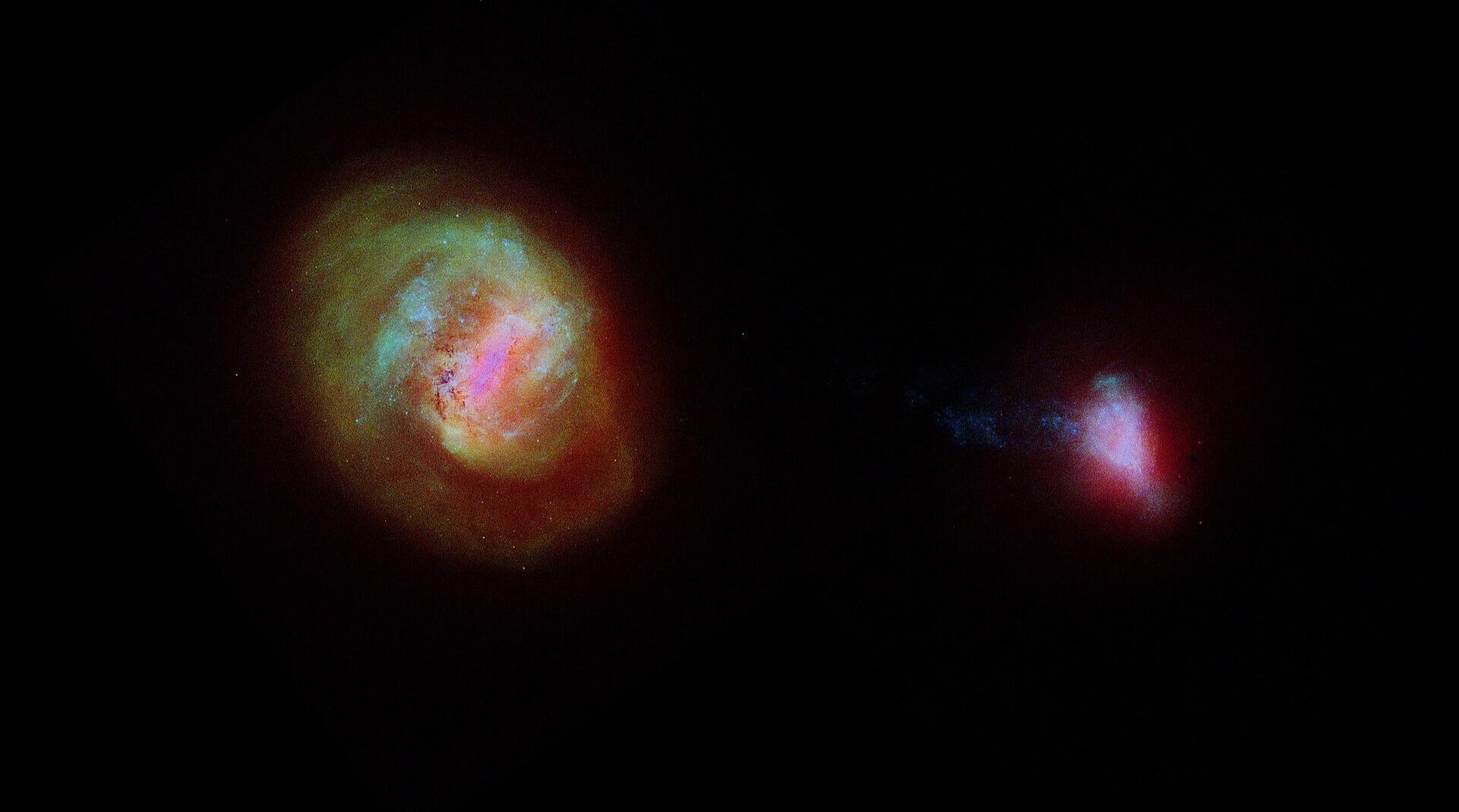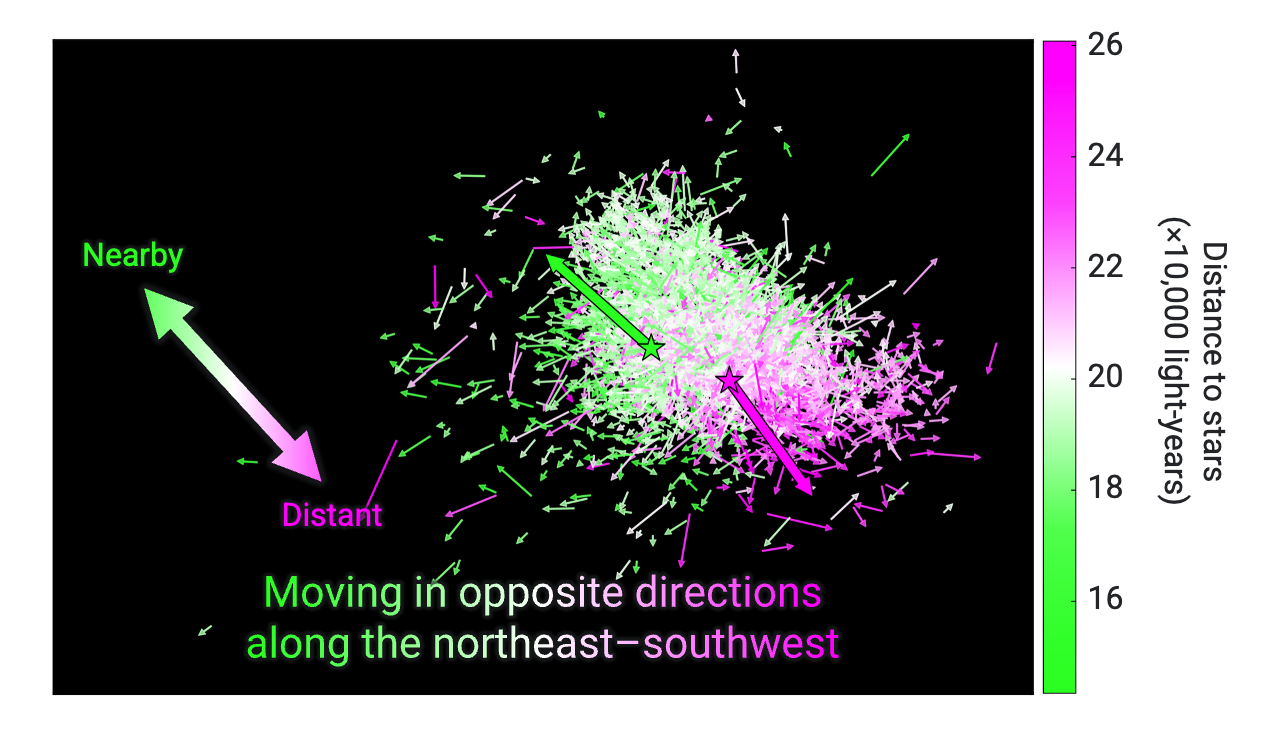
Mathematical and physical sciences
May 16, 2025
Stretched in a cross pattern: Our neighboring galaxy is pulled in two axes
New evidence supports the Small Magellanic Cloud’s ‘tearing phenomenon’.
Researchers at Nagoya University in Japan have discovered that Cepheid variable stars in our neighboring galaxy, the Small Magellanic Cloud (SMC), are moving in opposing directions along two distinct axes. They found that stars closer to Earth move towards the northeast, while more distant stars move southwest. This newly discovered movement pattern exists alongside a northwest-southeast opposing movement that the scientists previously observed in massive stars.
These complex bidirectional movements along two different axes indicate that the SMC is being stretched by multiple external gravitational forces—its larger neighbor, the Large Magellanic Cloud (LMC) in one direction and another, currently unknown mechanism in the other.
This study is the first to analyze stellar motions within the SMC by taking individual distances into account. Previous studies that investigated stellar motions within the SMC assumed that all stars were at the same distance from Earth (200,000 light-years), due to the lack of precise distance measurements—an oversimplification that may have caused errors.
The researchers used data from the Gaia satellite to analyze over 4,200 Cepheid variable stars—pulsating stars that expand and contract rhythmically causing their brightness to change. Astronomers can accurately measure their distances from Earth by comparing the time it takes for one complete cycle of brightening and dimming. By accounting for these individual distances, the researchers could analyze the stars' movements with more accuracy than previous studies.
A previous study by the same group reported that the SMC is being stretched by its bigger neighbor, the LMC. These two galaxies are gravitationally bound and interact with each other. These interactions have likely influenced their structure and evolution.

Gaia’s view of the Milky Way’s neighboring galaxies, the Large Magellanic Cloud (LMC) and the Small Magellanic Cloud (SMC).
Credit: European Space Agency (ESA)

Arrows show the velocities of approximately 4,000 Cepheid variable stars. Green arrows represent closer stars, while magenta arrows indicate more distant stars. The green star (★) marks the average position of stars closer than 180,000 light-years, and the magenta star (★) marks those more than 230,000 light-years. Arrows from these stars show the average motion direction (northeast and southwest). The top of the figure is north, and the left side is east. Credit: Satoya Nakano, Nagoya University
“There is also a possibility that the gravitational influence from our own Milky Way or the effects from a past close encounter between the two Magellanic Clouds contribute to the stretching of the SMC,” Dr. Kengo Tachihara from the Department of Physics at Nagoya University said.
Additionally, the research confirmed the theory that the SMC does not rotate, further suggesting that this relatively small, irregular shaped galaxy has unique dynamics likely influenced by gravitational interactions with the Milky Way and the LMC.
"Our discovery challenges previous theories of the galaxy’s structure and dynamics. We need to rethink how the SMC, LMC, and the Milky Way interact. New simulations that consider the SMC's non-rotating nature are needed to understand these complex relationships," PhD student and lead author, Satoya Nakano, explained.
The study, “Dual Directional Expansion of Classical Cepheids in the Small Magellanic Cloud Revealed by Gaia DR3,” was published in The Astrophysical Journal Letters on May 16, 2025, at DOI: 10.3847/2041-8213/adce0b.
Authors:
Satoya Nakano and Kengo Tachihara
Media Contact:
Merle Naidoo
International Communications Office, Nagoya University
Email: icomm_research@t.mail.nagoya-u.ac.jp
Top image: Stars observed by the Gaia satellite. The image shows our galaxy, the Milky Way, and our two smaller neighbor galaxies to the bottom right. Data from more than 1.8 billion stars was used to create this map of the entire sky. Image credit: European Space Agency (ESA)